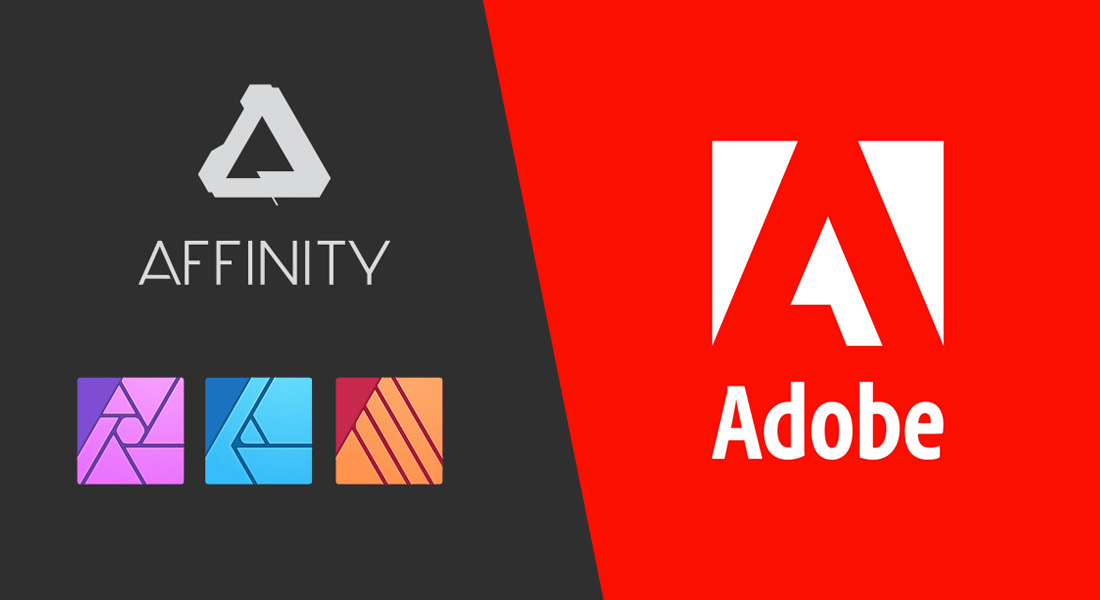

- AFFINITY PHOTO VS ADOBE LIGHTROOM HOW TO
- AFFINITY PHOTO VS ADOBE LIGHTROOM SOFTWARE
- AFFINITY PHOTO VS ADOBE LIGHTROOM PROFESSIONAL
- AFFINITY PHOTO VS ADOBE LIGHTROOM FREE
In this article, we look at Affinity Photo vs Luminar from a photographer’s perspective.ĭownload our Free ebook: Quick Start Guide to Affinity Photo Luminar embraces Artificial Intelligence (AI) and aims to provide automatic tools for fast and efficient editing without too much human intervention. The first (Affinity Photo) aims to provide advanced tools for adjusting and fine-tuning each aspect of your photos. (You can also purchase Lightroom presets from our sources, such as the ones we offer here at BeArt.Affinity Photo 1.9 and Luminar 4 have different perspectives on photo editing. Lightroom also offers editing presets, which can speed up your workflow with a simple click. There are a few advanced tools, such as an adjustment brush and subject masking. You can adjust elements like exposure, add contrast, apply crops, and adjust perspective distortion. Lightroom does offer a good number of basic editing tools and is non-destructive. You can open and edit vector files with Affinity Photo (but not in Lightroom). You can also work with multiple images simultaneously, use masks, apply filters, add text to an image, and more. It's more like Adobe Photoshop than Lightroom because it does everything Lightroom does and more.Īffinity Photo offers a more comprehensive editor, and you can work with multiple layers and create composites. editing capabilitiesĪffinity has a bit of an edge over Lightroom regarding editing. This means slowing things down since you're switching between programs and transferring image files. As an editing software, you can search, find, and open an image and make the edits without having to open another program.īecause Affinity Photo doesn't have cataloging capabilities, you'll likely have to find another way to catalog in a different program that offers digital asset management. Lightroom's search functionality is also excellent, making it easy enough to browse, select, and even rate images. (Larger catalogs can sometimes slow things down.) You can group your files to create as many catalogs as needed. Lightroom allows you to work with many (and large) image collections.
AFFINITY PHOTO VS ADOBE LIGHTROOM PROFESSIONAL
Lightroom is known for its capabilities as a catalog system for organizing photos, which is why so many professional photographers gravitate towards it. Affinity doesn't offer that functionality. If you want to manage and organize your image files, Lightroom is the way to go. Lightroom ideally needs a higher-spec computer for complex editing and managing a lot of images.
AFFINITY PHOTO VS ADOBE LIGHTROOM SOFTWARE
If you are using the software on an older laptop, Lightroom might prove challenging, even with the required 4 GB of RAM. This is because all new or newer software is designed to work with more recent hardware. It's really noticeable on an older computer. Something to bear in mind is that all image-editing software requires a lot of device resources to run.

Affinity is a more manageable program to run. Lightroom needs at least 2 GB of hard drive space. Then there's the storage space required by Lightroom Classic, which is far greater.

For example, Lightroom requires at least 4 GB, while Affinity Photo requires 2 GB of RAM. Where they differ in performance is in their system requirements. But Affinity isn't much better on this front either, as it also uses significant device resources. Then when it is open, it can use up system resources. For example, 17 Adobe processes run in the background even when Lightroom isn't open. (Affinity Photo only has one available interface.) PerformenceĪdobe software uses a substantial amount of a device's resources, even when not open. Lightroom Classic's interface is driven by functionality. They're the same program with different interfaces and cloud connectivity. Note that Lightroom has two layouts: Lightroom CC and Lightroom Classic.
AFFINITY PHOTO VS ADOBE LIGHTROOM HOW TO
) There's little difference between them regarding learning how to use the program and ease of use. (Following blogs like this one can help you learn about Lightroom. Both will require continued and frequent use and tutorials to learn how to best use them and leverage their capabilities. This means that both programs are initially somewhat complicated to use, and it can take a while - and lots of practice - before a user feels comfortable. Both programs have a relatively high learning curve before users become adept at using the program for what it offers.


 0 kommentar(er)
0 kommentar(er)
